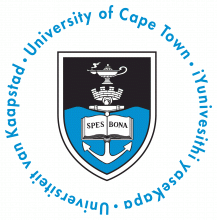Transnational education is now commonplace. But what is a transnational curriculum and what are its outcomes? Is it an agenda for a universal consensus above and beyond national politics and the dissonances of race, gender and ethnicity? Or is it something more uneasy, complex, unruly and creative?
Last month provided an opportunity to test answers to some of these questions. Each January, the Centre for Higher Education Development at the University of Cape Town hosts an intense 10-day residential as part of the Mellon Mays Undergraduate Fellowship Program, or MMUF.
Now in its 27th year, MMUF supports black and minority undergraduate students who have the potential and desire to move on to postgraduate study and compete for university jobs. The aim is to transform the demographics of the academy in the US and South Africa. By 2014, 571 MMUF fellows had gained their PhDs and there were between 500 and 600 students in the pipeline. The number of doctorates earned is expected to double by the early 2020s, with a large proportion winning appointments in academic institutions.
Here’s how our small contribution to this impressive project worked. Sixty senior undergraduates – all MMUF fellows – came together in a hotel underneath Table Mountain. The summer wind was incessant, temperature was in the mid-30s, the conference room hot with impressions and ideas, the aircon no more than a symbol.
Participants were from 22 colleges and universities, across two continents. The only things that they had in common were that they were all students and they were all representatives of groups long marginalised by the academy, underrepresented by combinations of race, ethnicity and gender.
Many of them had been sharpened by recent and current political engagement; with campus protests against racism and police brutality in the US; by the campaign for free education and higher education transformation in South Africa. In this, they were perhaps exemplars of what a transnational classroom really is: less a United Nations-style debating chamber; more a cauldron of new and often contradictory ideas.
The theme was inequality and its consequences, seen through the lenses of housing, health and education. This was a classic “compare and contrast” approach, encouraging participants to weld together data and analysis with their own experiences.
We used the city’s metropolitan sprawl as a canvas, travelling through the enduring imprint of apartheid segregation, the tangible realities of income inequality. We encouraged discussion of the similarities between the US and South Africa and the variations that result in complexity within each country. We looked at the relationship between historical legacies and inequality today: Jim Crow laws and apartheid legislation; differing forms of slavery; the rights of indigenous communities. On the final day of the programme, discussion groups gave thoughtful and perceptive presentations.
At the same time, though, there was a counter-current of ideas that were partly revealed and issues that seemed difficult to articulate. There was concern about the balance between inquiry and voyeurism and unease about casting township communities as victims. There were the micro-aggressions of race, gender and sexuality – the small, cumulative insults that map out daily life. For some participants, retelling the history of migrant labour risked essentialising the dysfunctionality of the black family. For others, there was a lack of ways of speaking about America’s global hubris without giving offence to visitors. There were issues about racial identity, knowledge and expertise in universities that have yet to reflect anything like the diversity of their wider communities. There were direct connections with the turbulence across American and South African campuses.
The programme ended with a celebration that included a drumming session. Drumming has become a speciality of the Cape Town conference circuit; a group of skilled performers takes on a disparate group of people, many of who believe they have no sense of rhythm, and has them performing a complex, syncopated routine in no time at all.
Our 60 MMUF fellows were thoroughly syncopated, celebrating new levels of skills and confidence. There is perhaps a paradox here that goes to the core of what a transnational curriculum can be. Was their evident pleasure grounded in their dissatisfaction; in the opportunity of raising awkward issues, still to be fully articulated; in their successful resistance to a neat and buttoned-down academic agenda?
Our universities are – slowly – adjusting to an endemically unstable world: economic booms and busts; a different and uncertain world of work; rapid and disruptive innovation; unprecedented levels of migrancy and displacement; extreme and unpredictable violence.
It follows that a transnational curriculum for higher education will be a microcosm of this instability and uncertainty, and that a heightened sense of unease and discomfort will be a mark of success.
Martin Hall is the former vice-chancellor of the University of Salford. He is now based in South Africa.
Register to continue
Why register?
- Registration is free and only takes a moment
- Once registered, you can read 3 articles a month
- Sign up for our newsletter
Subscribe
Or subscribe for unlimited access to:
- Unlimited access to news, views, insights & reviews
- Digital editions
- Digital access to THE’s university and college rankings analysis
Already registered or a current subscriber? Login









